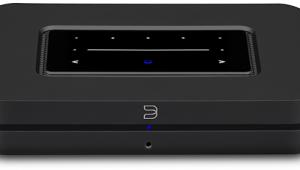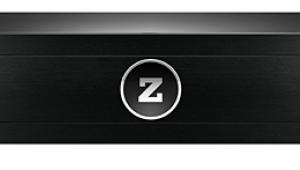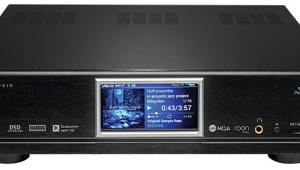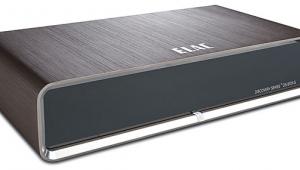TiVo Bolt Unified Entertainment System Review

AT A GLANCE
Plus
One-touch leapfrogging of any size commercial block
Four tuners
Can play shows 30 percent faster
Mobile device transfer
Integrated search functions
4K UHD compatible
Minus
On-demand cable may not be available
No component video
output
No clock on front panel
THE VERDICT
TiVo Bolt is an indispensable tool for TV-obsessed viewers who hate commercials and value the ease of managing all their cable, online, and local-network-stored entertainment from one smartly designed receiver/recorder.
With 412 scripted TV series originating on broadcast, cable, and online channels last year, viewers face the twin challenges of finding shows that appeal to them and having enough waking hours to watch them. TiVo’s new flagship digital video recorder, Bolt, purports to help solve both problems. An admitted TV addict, I bolted for a Bolt to see if it could rekindle the excitement I felt when TiVo debuted in 1999.
Hump Day
White and bent, Bolt is an unusual-
looking component. Because of its hump, it needs to be topmost in a stack. Included in the box are an HDMI cable and a remote with two AA batteries (also white) that operates in either RF or IR modes
(it defaults to RF with the guided setup). As an accessory, I highly recommend the TiVo Slide Pro RF remote ($50) and its slide-out QWERTY keypad that’s used for setting up accounts and inputting search terms. Both remotes work with the Bolt’s Remote Finder function, which activates an audible signal from the remote via a button on the rear panel.
Bolt is smaller than past TiVo DVRs, partially a result of making the power supply external and removing most legacy ports. A single RF input accommodates a coaxial cable or antenna for watching cable or over-the-air broadcasts, though you can’t have both sources hooked up at the same time, as you could on past models with two RF inputs. With component video gone, one HDMI output is the only way to connect the picture to your A/V receiver or TV. Audio also can be output through an optical digital or one- pin stereo jack.
Bolt embeds Wi-Fi (AC Dual band, N, G, B, A), but I chose to plug into the Ethernet port (10/100/1,000 megabits per second). I installed a CableCARD on my own that had been supplied by my cable service, Verizon FiOS.

Along with a pair of USB 2.0 ports, there’s an eSATA port on the back panel that should appeal to video hoarders. It hooks up to the Western Digital My Book AV DVR Expander ($130 from TiVo), a 1-terabyte external drive. According to TiVo, each terabyte lodges 150 hours of high-def programs.
I powered on Bolt and went through the prompts for activating TiVo service and downloading my cable system’s program guide. Within 30 minutes, I was setting up OnePass recordings for series I regularly watch. You can opt to include reruns, episodes that are new, or ones streamed from online services.
Skip It
Due to the usual legal concerns, TiVo has had a tortured history regarding its intrinsic ability to
skip commercials. It once shied away from shipping units with a 30-second quick-skip function, leaving it to user groups to disseminate a code you could input to assign a skip interval to a button.
If your TiVo lost power, you had to do it again. Meanwhile, the company’s original competitor, ReplayTV, embedded a Commercial Advance function that skipped over ads without requiring you to touch the remote. Broadcasters sued, and ReplayTV was driven out of business.
More recently, Dish Network’s Hopper hardware became the subject of lawsuits filed by broad- casters who questioned the legality of its AutoHop function, which allows the option of commercial-free playback of certain recordings made with the Hopper’s PrimeTime Anytime feature. Though Dish prevailed in court, it later agreed during negotiation of retransmission rights with some networks to disable the AutoHop function for the first few days following a show’s premiere.
TiVo’s new compromise is SkipMode, available for shows recorded during prime time that encompass the top 20 cable channels as gauged by TiVo users. It employs human operators to input markers that ghettoize blocks of commercials that now regularly drain 3 to 5 minutes of our lives four to five times an hour. You have to wait at least 15 minutes after a broadcast ends before a “Skip” label appears alongside the program title in the Now Playing menu. Then, whenever the show breaks, you’re prompted to press the remote’s D button. The program then picks up instantly. Although you’re required to touch the remote at each commercial break, doing so is way more efficient than fast-forwarding or pressing a 30-second advance button eight or nine times, then backtracking if you overshoot. Clearly, the technology is in place if TiVo chooses to further automate SkipMode.
TiVo offers another trick that lets you watch more TV in less time. QuickMode, compatible with any recorded or delayed show, plays video 30 percent faster without altering the audio pitch. Actors walk and talk faster, but they don’t sound like Alvin and the Chipmunks, and captions are readable. Using SkipMode to vault commercials and QuickMode to hasten play, I was able to watch 60 Minutes in 33. With both in play, a chime supplements the SkipMode prompt. Getting time back on every hour is something you’ll cherish the older you get.
QuickMode isn’t suitable for every show, though. While it picked up Scott Pelley’s sluggish pace, it made it more difficult to understand a Swiss official with a thick accent as he talked about FIFA. The tempo of Bruce Springsteen music in another 60 Minutes segment wasn’t natural. As for the timepiece that opens and closes the program, the ticker sounded like it was heading for a heart attack. There are high-quality programs (like The Good Wife and anything written by Aaron Sorkin) where you should savor the dialogue, not dash through it. I’d reserve QuickMode for watching news reports and golf matches—or for getting some comic relief as manic contestants flap their arms on The Price Is Right.






























































